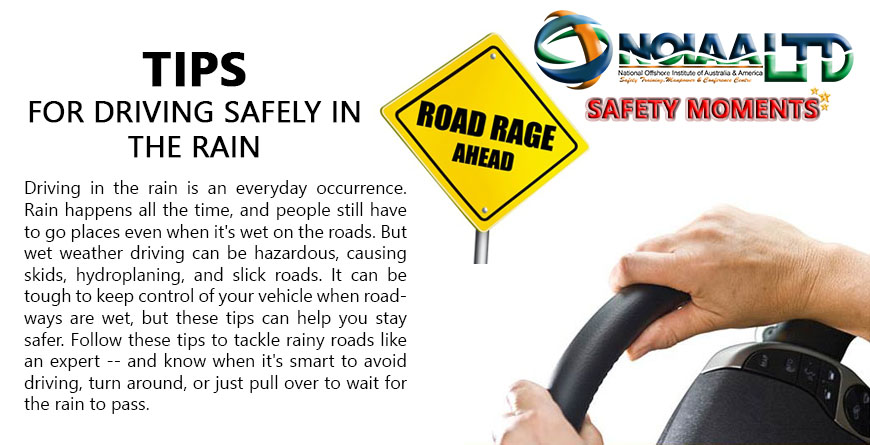Ask a question, get an answer ASAP!
GET A QUOTE
Spare Tire Installation Cost
Service Location
Price range for all vehicles
Driving with a slow leak in your tire is potentially dangerous because it can cause a flat tire. Once the tire becomes flat, it can become a blowout hazard. A blowout can cause you to lose control of the vehicle, putting yourself and others at risk for a car accident. If you notice your tires are not holding air like they are supposed to, or you have to keep putting air in your tire constantly, your tire may have a slow leak. It is best to get the tire looked at by a mechanic so they can diagnose the problem and repair the leak and/or the tire. There are several ways to check for a tire leaking of air.
Here are some things to look for if you feel that one of your tires is slowly leaking:
One way to check for a leak is to listen near the suspect tire. Sometimes you will be able to hear the pressurized air escaping from the small hole in the tire. It will sound like a faint hissing noise. If you hear this, make an appointment with a mechanic to have your tire problem inspected and repaired.
Another way to check if the tire has a leak is to move your hand across the entire area of the tire to feel any air that is leaking out. If you suspect one area, focus putting your hand over the spot to see if you feel any air. Chances are if you have a small hole, you will be able to feel the pressurized air coming out.
A tire with a low psi can cause heat to build up in the tire, which can cause wear and eventually a blowout. If a slow leak is left unattended, the entire tire could be lost and would have to be replaced, where a small patch or plug could have fixed the tire before. A blowout requires a more intensive repair than a relatively simple one if you would have had the leaked checked out when you first suspected it.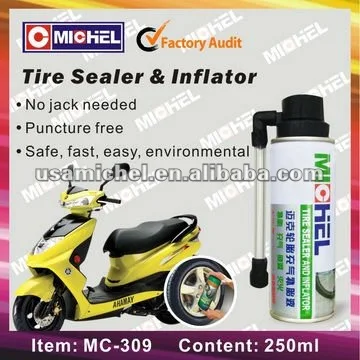
Driving with a slow leaking tire is dangerous, especially at higher speeds. The tire should be looked at by a professional as soon as the leak is noticed. If the tire does happen to fail while you are driving, causing a blowout, you may lose control of the vehicle causing injury to yourself and others. If you suspect a leak in your tire, make sure to have it repaired or replaced by a mechanic as soon as possible to prevent experiencing anything worse from occurring.
The most popular service booked by readers of this article is Spare Tire Installation. YourMechanic’s technicians bring the dealership to you by performing this job at your home or office 7-days a week between 7AM-9PM. We currently cover over 2,000 cities and have 100k+ 5-star reviews... LEARN MORE
SEE PRICING & SCHEDULING
Tires
safety features
The statements expressed above are only for informational purposes and should be independently verified.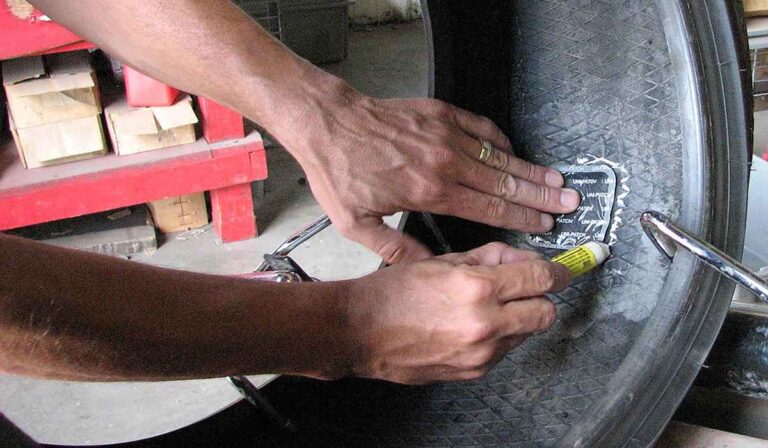 Please see our terms of service for more details
Please see our terms of service for more details
4.2 Average Rating
Service Hours
7 AM - 9 PM
7 days a week
Phone Number
1 (855) 347-2779
Phone Hours
Mon - Fri / 6 AM - 5 PM PST
Sat - Sun / 7 AM - 4 PM PST
Address
We come to you at no extra charge
Guarantee
12-month/12,000-mile warranty
Our certified mobile mechanics perform over 600 services, including diagnostics, brakes, oil changes, scheduled mileage maintenances, and will come to you with all necessary parts and tools.
Get a fair & transparent quote instantly before booking.
SEE REVIEWS NEAR ME
11 years of experience
585 reviews
Request Nicholas
Nicholas
11 years of experience
Request Nicholas
by Gloria
Toyota Camry V6-3.0L - Spare Tire Installation - Knightdale, North Carolina
Nicholas finished an earlier appointment which enabled him to come by earlier than originally scheduled. I'm very grateful he chose to reschedule. While replacing a flat with my donut spare, he instructed me on how to safely drive to the tire shop for the repair. More importantly to have the shop add air to the donut spare. Nicholas did an excellent job. He as very professional. Thank you
I'm very grateful he chose to reschedule. While replacing a flat with my donut spare, he instructed me on how to safely drive to the tire shop for the repair. More importantly to have the shop add air to the donut spare. Nicholas did an excellent job. He as very professional. Thank you
by Jairus
Ford E-150 Econoline - Spare Tire Installation - Durham, North Carolina
I was VERY pleased with Nicholas' expertise and was more than delighted that he was so prompt. He was very polite and friendly, and he did a marvelous job. If I ever need any repairs to my vehicle in the future, I would definitely ask for Nicholas.
29 years of experience
91 reviews
Request Luis
Luis
29 years of experience
Request Luis
by Saravana
Toyota Prius L4-1.5L Hybrid - Spare Tire Installation - Prospect Heights, Illinois
Luis attended my car today and help in fixing the issue quickly. He is nice and friendly guy. I will recommend him for any services.
11 years of experience
106 reviews
Request Hugh
Hugh
11 years of experience
Request Hugh
by Laura
Toyota FJ Cruiser V6-4.0L - Spare Tire Installation - Castle Rock, Colorado
Hugh came to change out a flat tire for my spare today. I have to say that I feel sheepish for calling someone to come help because I know how to change a tire but I was at work and on shift until 2 am and he came to my place of work. Instead of just installing my spare, he took the time to evaluate the situation. I had a nail in my tire and he took the tire to get patched and my vehicle drove better on my way home than when I left this morning. It was snowing sideways when he showed up to help me. He was a bit of a godsend in the moment and I would recommend him to anyone. I was just distressed because I did not have enough tip to give this guy for overachieving when I needed it. Huge five star review. I only hope to pay his generosity forward. He was more than worth the cost and he did a phenomenal job.
He was more than worth the cost and he did a phenomenal job.
26 years of experience
88 reviews
Request Jonathan
Jonathan
26 years of experience
Request Jonathan
by Adam
Honda Civic L4-1.7L - Spare Tire Installation - Smyrna, Georgia
Jonathan was very punctual, friendly, and transparent. He clearly explained everything he did and provided detail about any additional work he recommended. Great work!
Our certified mobile mechanics make house calls in over 2,000 U.S. cities. Fast, free online quotes for your car repair.
GET A QUOTE
GET A QUOTE
How Long Does a Lateral Link Last?
In In order for a car to ride and handle like it is supposed to, the suspension system will have to be working properly. There are a variety of different components that are located in a car’s suspension system.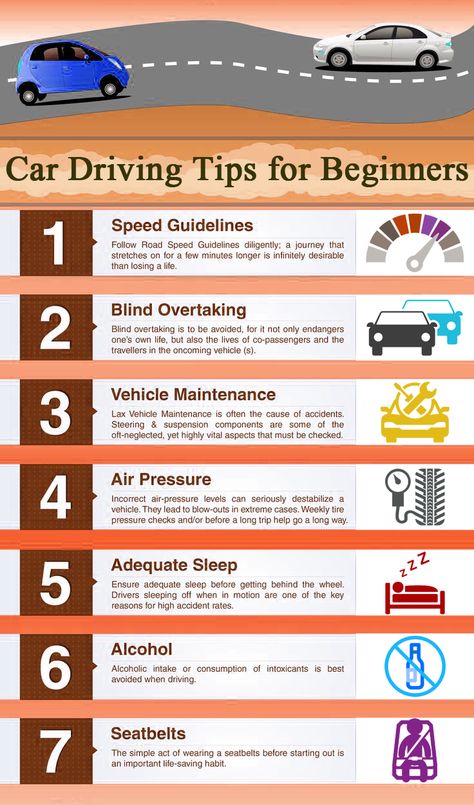 While...
While...
10 Most Annoying Car Features
Every Every car has its own quirks or drawbacks, whether it’s a sun visor that squeaks or an errant rattle. Most of such idiosyncrasies are either not that intrusive or are features that you’ve become accustomed to over time. There...
How to Maintain and Protect Your Tires
Car tires are important to staying safe on the road. Check your tire pressure or if there is any dry rot or cracking to make your tires last longer.
What tips should I know about using the TPMS?
Your car is equipped with a tire pressure monitoring system (TPMS) that keeps tabs on the amount of air in each tire. However, there are a few things you should know about how it works to make sure that you’re...
Between 35-40 mph a harmonic vibration in car cabin
Since it sounds like you have ruled out tires and tire balance, it's time to start looking at other things. The problem could be the driveshaft (https://www.yourmechanic.com/services/driveshaft-replacement) or possibly a faulty wheel bearing (https://www.yourmechanic.com/services/wheel-bearings-replacement). However, the fact that it goes...
The problem could be the driveshaft (https://www.yourmechanic.com/services/driveshaft-replacement) or possibly a faulty wheel bearing (https://www.yourmechanic.com/services/wheel-bearings-replacement). However, the fact that it goes...
I had 2 tires put on the front of the car and now on the passenger side I hear a popping or knocking sound coming from there, I al
Hello, thank you for writing in. It is impossible to tell what the issue is without doing some further testing. New tires can absolutely put added stress on already worn down components, or they can cause new issues if not...
Maintenance
Cities
Estimates
Our service team is available 7 days a week, Monday - Friday from 6 AM to 5 PM PST, Saturday - Sunday 7 AM - 4 PM PST.
1 (855) 347-2779 · [email protected]
Read FAQ
GET A QUOTE
Everyone knows that you should never drive on a flat tire, but what about a tire with a slow leak? Technically it’s not flat, so it’s not a big deal, right? Wrong! Driving on a tire with a slow leak can actually be just as dangerous as driving on a flat tire.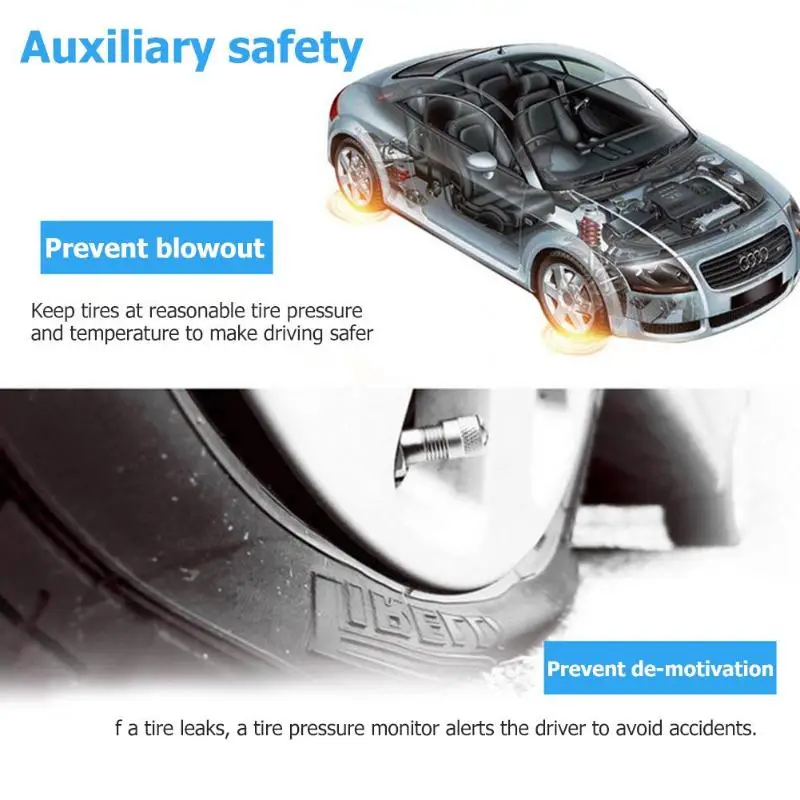 Continue reading to learn more about the dangers of slow leaks from an auto mechanic in Salt Lake City, UT.
Continue reading to learn more about the dangers of slow leaks from an auto mechanic in Salt Lake City, UT.
Why is driving on a slow leak a bad idea?
As mentioned above, driving with a leak is never a good idea. Here are a couple of reasons why you should think twice about driving on a tire with a slow leak:
 Save yourself from needing those repairs by replacing your tire as soon as possible.
Save yourself from needing those repairs by replacing your tire as soon as possible.How to check for a leak
The good news about slow leaks is that you don’t have to be an auto mechanic in Salt Lake City, UT to detect one! Finding out that you have a leak (and where it’s coming from) is fairly simple, no matter who you are. Here’s what to do:
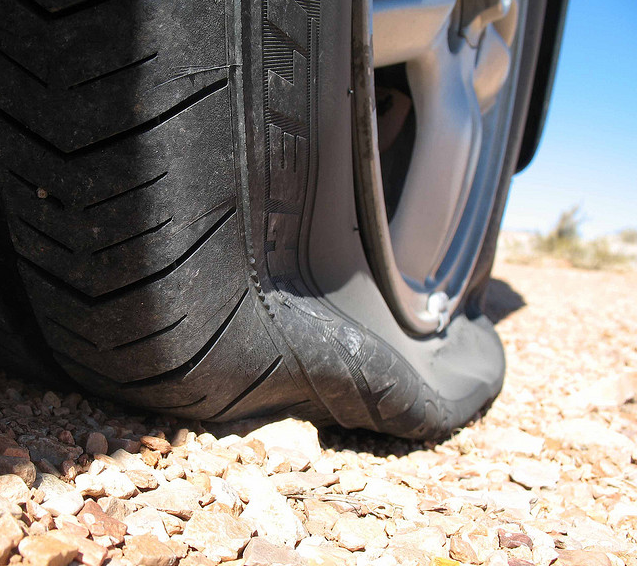
Bring your car to an auto mechanic in Salt Lake City, UT at AMR Auto Repair & Towing as soon as you notice the signs of an air leak. We can either patch up the hole or set you up with a brand-new set of tires!
Categorised in: Mechanic
This post was written by Writer
Georgia Highway Code Section 8 Safety Recommendations
Contents
Before getting into the vehicle, check the tire pressure using the recommended PSI (pounds per square inch) reading located on the vehicle door lock.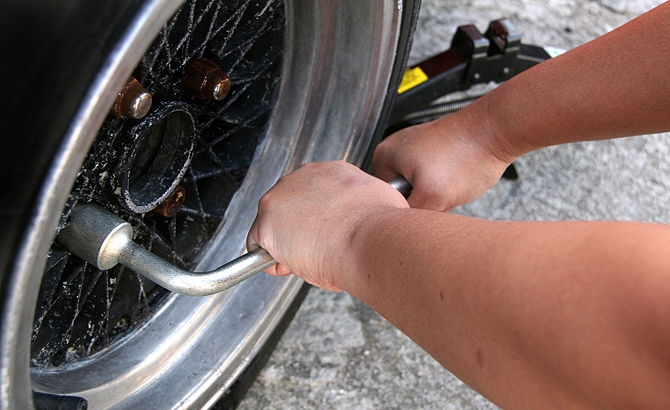 Use a pressure gauge to measure PSI in tires. If the measured PSI value is higher than the number printed on the door lock, bleed the tires. If the PSI is low, add air until the pressure reaches the desired value (or call a service worker to help you with this).
Use a pressure gauge to measure PSI in tires. If the measured PSI value is higher than the number printed on the door lock, bleed the tires. If the PSI is low, add air until the pressure reaches the desired value (or call a service worker to help you with this).
Once a month or before going on a long trip, check your tires for wear and damage.
One easy way to check wear is to use the “penny test”.
The rules of the road alone cannot take into account all types of driving situations that may arise. But there are a few general rules that drivers must understand and follow. Please read this chapter carefully. Someday, these safety tips could help you avoid an accident, serious injury, or even death. But this is only general information, and it cannot determine your actions in all situations. It is up to you to assess the situation and decide on the best course of action.
But there are a few general rules that drivers must understand and follow. Please read this chapter carefully. Someday, these safety tips could help you avoid an accident, serious injury, or even death. But this is only general information, and it cannot determine your actions in all situations. It is up to you to assess the situation and decide on the best course of action.

Maintaining good posture while driving is important because it allows you to better see and control the possible hazards on the road. As a rule, it is most convenient to hold the steering wheel with your left hand on the steering wheel at the 9 o'clock position, and your right hand at the 3 o'clock position. Some manufacturers recommend setting the arms to the 8 o'clock and 4 o'clock positions if the vehicle is equipped with airbags. Consult your owner's manual or contact your vehicle manufacturer to determine which position is best for your vehicle. Always keep both hands on the steering wheel unless you are performing another driving task, such as turning on your turn signal.
If possible, avoid driving in heavy fog. If you still need to drive, follow these guidelines:
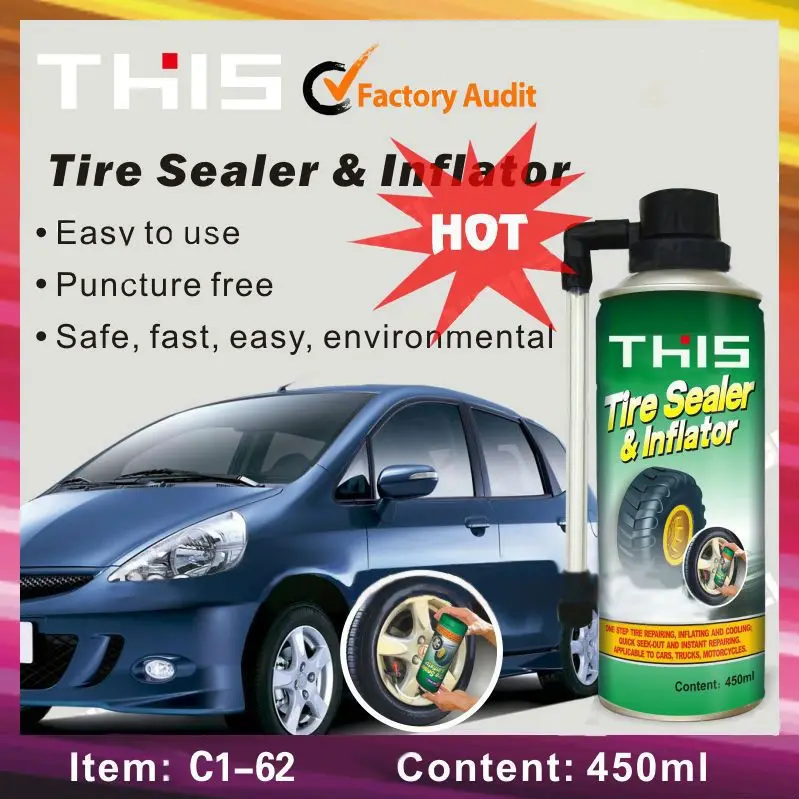 Fog can make it harder to accurately determine the distance between you and other vehicles;
Fog can make it harder to accurately determine the distance between you and other vehicles;
If there are areas of water on the road surface, the risk of skidding (hydroplaning) increases. At speeds up to 35 miles per hour (56 km/h), most tires move water away from the wheel, much like a windshield wiper cleans a windshield. As the speed increases, the effectiveness of this property of the tires decreases, the wheels can begin to lose contact with the road and slide through the water, like water skis.
In a standard passenger car, partial hydroplaning can start at speeds up to 35 mph (56 km/h). At 55 mph (88 km/h) the tires may lose contact with the road completely. If this happens, then any friction disappears, which helps to control the processes of braking, accelerating and generally driving a car.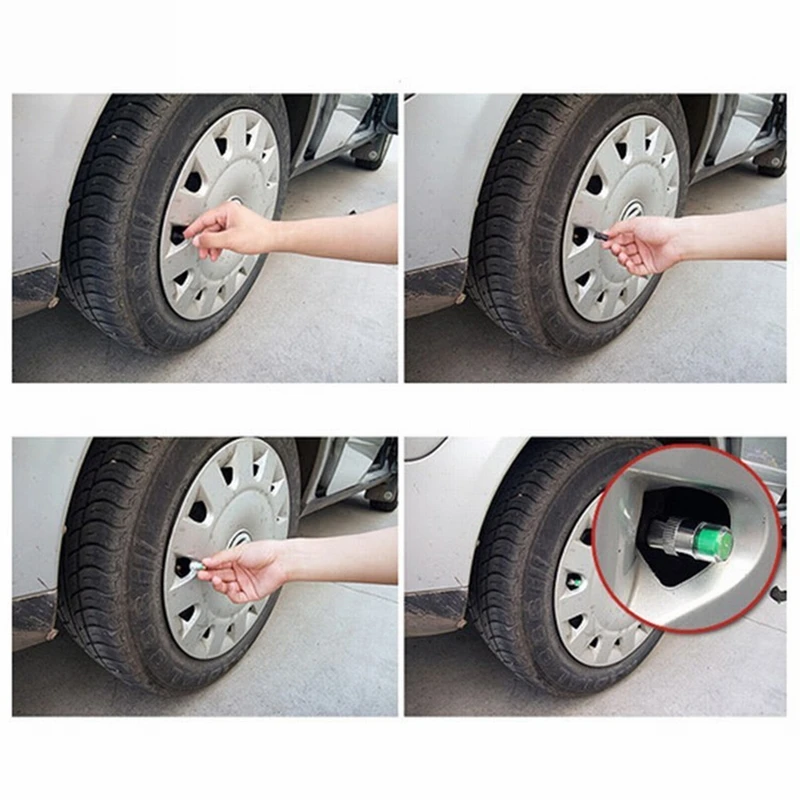 The car can go into an unpredictable and uncontrolled skid. If this happens, take your foot off the gas pedal to allow the car to slow down.
The car can go into an unpredictable and uncontrolled skid. If this happens, take your foot off the gas pedal to allow the car to slow down.
To prevent hydroplaning, keep an eye on the tread of your tires. But most importantly, slow down when there is water on the roadway.
When the vehicle's tires lose traction, a skid can occur. When the car skids, both the power that the engine transmits to the wheels and their stopping power are lost. Sliding can unpredictably increase the skid distance.
A skid can occur if you apply the brakes or turn the steering wheel too hard.
If your vehicle is skidding:
Remember that the first half hour of rain is the most dangerous because roads become extremely slippery as water mixes with oil and other chemicals on the pavement.
Sharp bends in the roadway are potential sources of danger for drivers. Due to the more difficult maneuvering, there is a chance that a less careful driver may not keep their lane when cornering. When roads are slippery due to rain or other hazards, sharp turns can be especially dangerous and require much slower speeds than when the road is dry. Tight curves are usually preceded by signs indicating the safe speed to enter the curve in miles per hour. This speed is usually less than the general posted road limit and therefore makes driving safer.
Slow down before entering a tight curve. If you realize you are going too fast while cornering, don't hit the brakes hard, as this could cause your vehicle to skid. Instead, take your foot off the accelerator, apply the brake gently, and keep driving while keeping the lane.
Uneven terrain and obstacles make it difficult to safely maneuver the vehicle after it has left the roadway.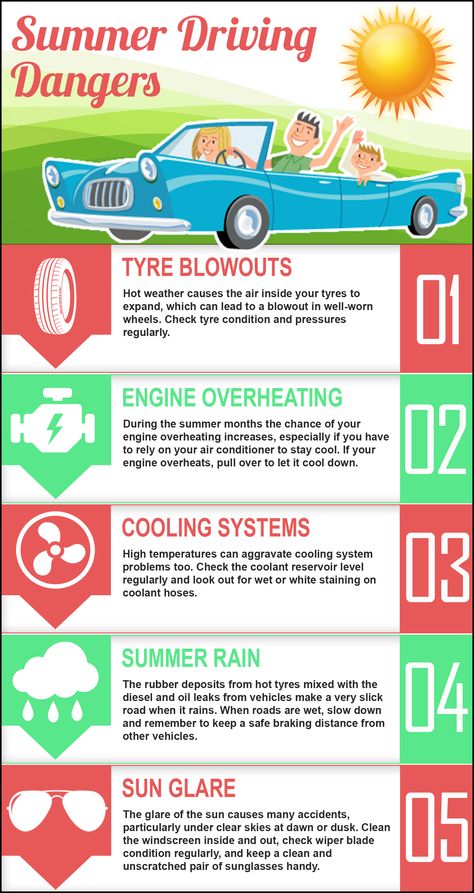 Doing so could result in an accident resulting in serious injury or death.
Doing so could result in an accident resulting in serious injury or death.
Pay attention to road conditions so that you do not leave the road while driving. Drive at or less than the speed indicated on a regulatory or warning sign indicating potential hazards.
Drive carefully paying attention to the actions of the drivers around you.
If your car drives off the road, try to follow these guidelines:
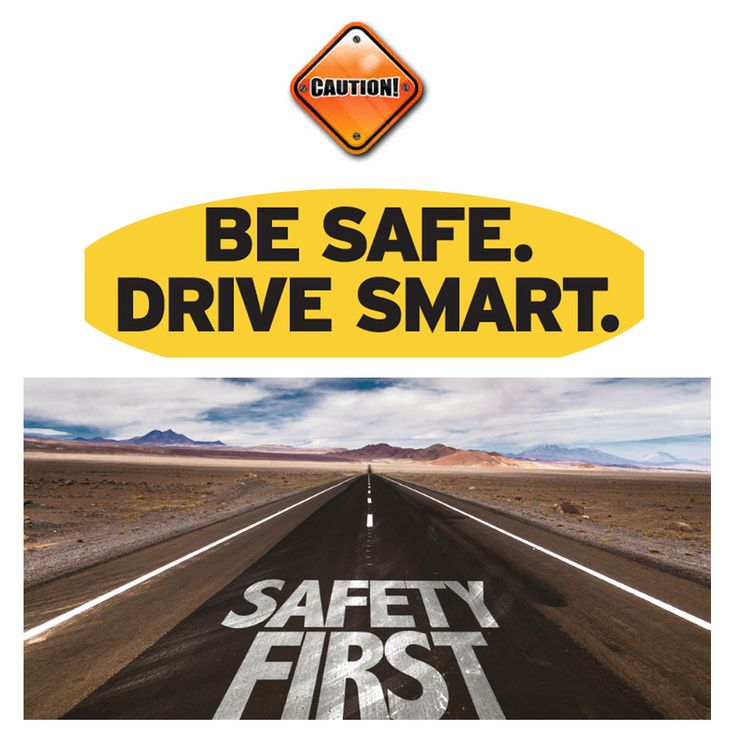 If necessary, come to a complete stop before re-entering the road.
If necessary, come to a complete stop before re-entering the road.
Unlike a slow leak that causes tires to depressurize over time, a puncture ruptures the tire and deflates immediately. If this happens while driving it could result in loss of control.
If your tire suddenly bursts, don't panic. Follow these guidelines to maintain control of your vehicle:
Winter weather can create many driving hazards. Due to the generally mild climate, most Georgia residents are inexperienced with driving in winter weather. Here are some tips to help you drive safely in winter:
Winter driving tips
Cars emit carbon monoxide, a deadly, odorless and colorless gas. Symptoms of carbon monoxide poisoning are sudden fatigue, yawning, dizziness, and nausea. Simple precautions to avoid carbon monoxide poisoning are:
Remove the victim of carbon monoxide poisoning to fresh air, call emergency medical services and give rescue breathing if necessary and you are trained to do so.
Diverging Diamond Interchange (DDI) shifts traffic to the opposite side of the road, allowing vehicles to enter the freeway by turning left onto the ramp without stopping. This reduces the number of conflict situations and improves traffic flow and safety. DDI is a proven, state-of-the-art, low cost design that provides traffic control without the need to stop flow. Under normal free traffic conditions on surrounding highways, DDI can reduce pre-rush hour delays by up to 20 percent.
Steering locks are anti-theft devices found in most vehicles manufactured since 1969. Steering locks can lead to dangerous situations for drivers who are not familiar with their operation. If the vehicle ignition is in the locked position while the vehicle is moving, the vehicle control will be disabled and the driver will not be able to control the vehicle.
For more information about steering locks, contact the Car Safety Foundation at carsafe.org .
Following too close to another vehicle can lead to accidents resulting in collisions. When following another vehicle, there must be sufficient clearance to stop safely if the vehicle in front suddenly slows down or stops. One way to determine if there is enough distance between your car and the car in front of you is to measure the amount of time between the time the car in front of you passes the checkpoint and the time your car passes the same checkpoint. Watch the car ahead of you. When he passes a chosen point, such as a telephone pole or a street sign, start counting "one thousand one, one thousand two." If you manage to reach the selected point before you finish counting, you are following too closely. In inclement weather, road construction or repair areas, heavy traffic, and at night, the distance between your vehicle and the vehicle in front of you should be even greater.
Total braking distance (feet).
The distance you need to stop your vehicle is important for determining a safe speed. The table below can be used as a guide, but the actual stopping distance may depend on the following factors in addition to vehicle speed:
Speed is the leading cause of serious injury and death in road traffic crashes. The greater the speed, the greater the impact force. The figure below shows the relative impact force when hitting a stationary object, compared to falling from a multi-story building.
An expressway differs from ordinary roads or highways in that access to it is controlled. Vehicles can enter and leave it only in certain places - junctions. Most expressways in Georgia are free, but there are a few that charge a toll.
With the exception of controlled entry/exit points and dedicated occupant vehicle (HOV) lanes, expressway traffic is similar to normal divided highway traffic. They also have a dividing strip between the directions of traffic; the lanes are indicated by dotted lines, and the edge of the carriageway by a solid line; the slower movement should keep to the right. All rules of the road and recommendations related to safe driving still apply on expressways.
The entrance ramp is a short section of one-way road that leads to an expressway. From the entrance ramp you move to the acceleration lane. This lane runs along the main roadway. In the acceleration lane, you must adjust your speed to match the speed of the main highway. When it's safe, you should merge with the traffic. Vehicles on the expressway have traffic priority, but polite drivers will let you into the traffic.
Prepare to exit the controlled highway by moving safely into the right lane for the right exit or the left lane for the left exit.
Signs will tell you about the approaching exit. There are special deceleration lanes at the exit.
Set ramp speeds are usually low due to roadway design. Drivers must use either brake lights or a turn signal to signal a change in speed to drivers in the rear if they slow down in the lane in preparation for an exit.
Drivers driving vehicles in divided lanes must drive to the right of the median lane unless a sign, traffic control device or police officer indicates otherwise. Drivers must observe a yellow or white stripe on the roadway that indicates traffic lanes, lane convergence, or areas where vehicles are not allowed. Drivers may enter or exit controlled access roads only at designated entrances and exits.
The term "Wedge" (CORE) means the area where two traffic lanes intersect. A wedge is an area, usually triangular, formed by solid white lines between the existing lane and the main road where they meet. These sections of road are most commonly encountered at the intersection of a lane with an adjacent lane on controlled access highways. A wedge is an area bounded by solid white lines between the main and adjacent lanes.
Drivers entering a controlled access highway are prohibited by law from crossing this solid white line and must continue in the acceleration lane until the solid white line disappears.
High Occupancy Vehicle (HOV) lanes are lanes that are allowed and restricted to vehicles with more than one passenger, buses, motorcycles, and alternative fuel vehicles. These lanes are marked with a diamond-shaped symbol, which indicates the hours of traffic restriction.
Penalty for violation of HOV lane restrictions is a fine of up to $75 for the first violation; up to $100 for a second violation; up to $150 for a third violation; and up to $150 plus one point added to the penalty list for the fourth or subsequent infraction.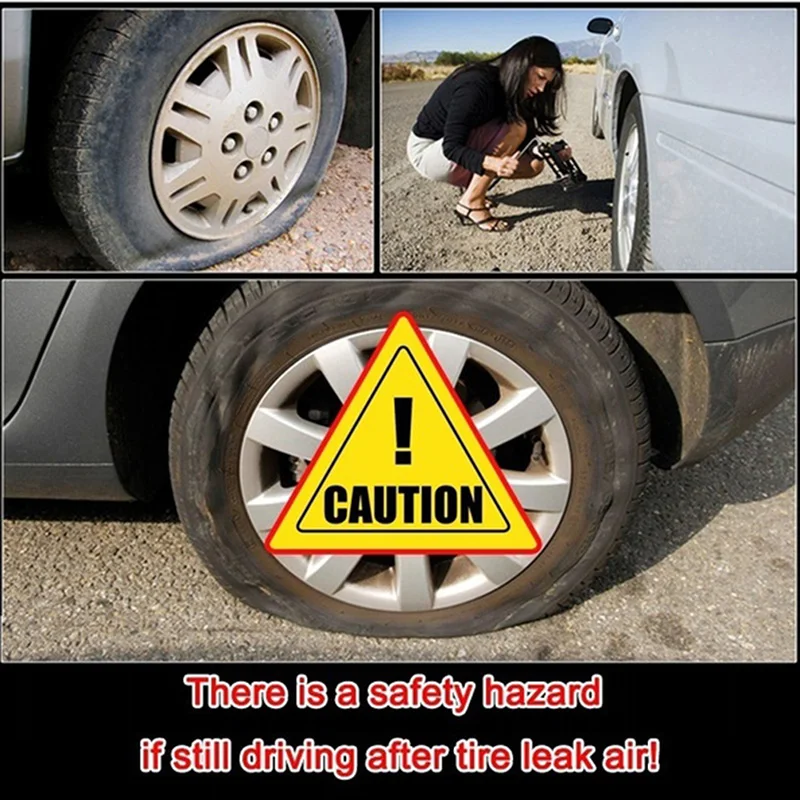
When the HOV lane is separated from the main lanes by a double solid line, entry to it is prohibited.
If the boundary double line is broken, entry is allowed.
High Occupancy Toll (HOT) lanes are I-85 express lanes that allow registered passenger vehicles of three or more people, motorcycles, ambulances, and alternative fuel vehicles drive for free.
You can check the 511ga.org website for information on road construction, road closures, exit numbers, and other information to help plan your trip;
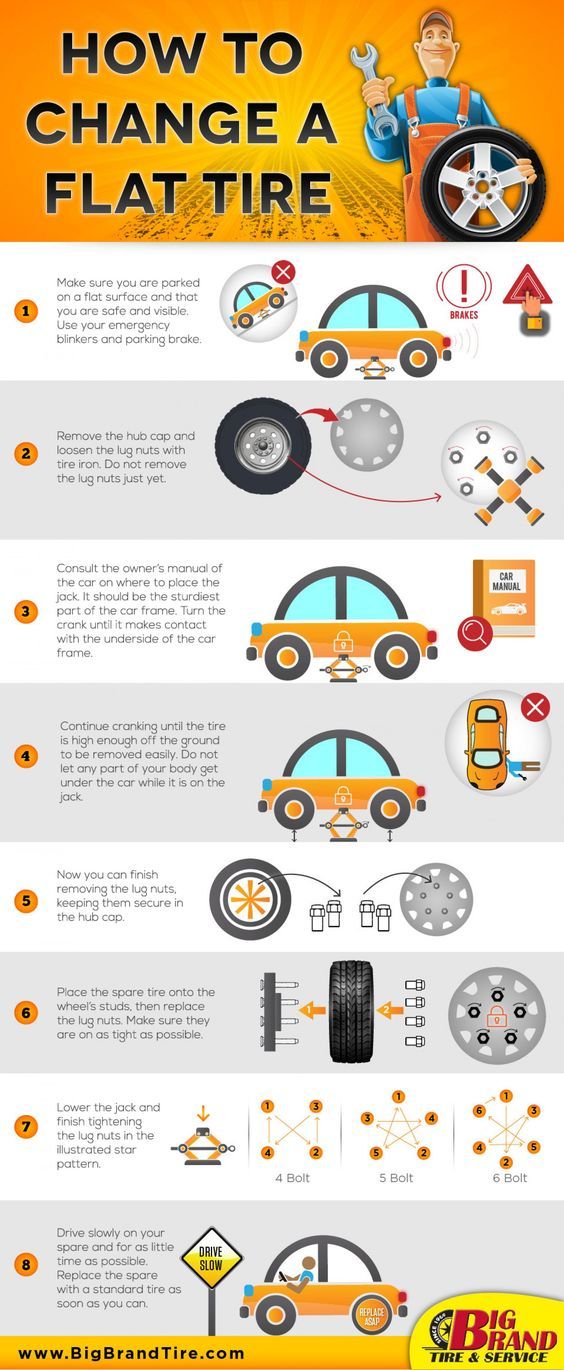 It is important to check the gas gauge and make sure you have enough fuel. Also check the water, oil and tire condition of your vehicle;
It is important to check the gas gauge and make sure you have enough fuel. Also check the water, oil and tire condition of your vehicle; 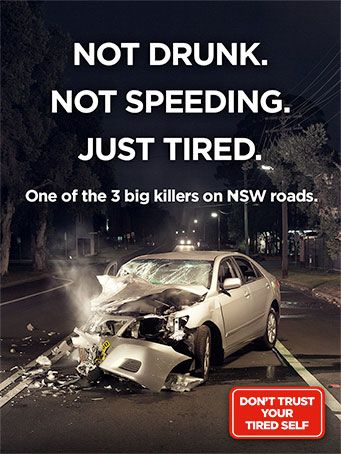 Attempting to return to your lane before you have overtaken another vehicle and maintained sufficient safety distance could result in an accident. Carefully check the left lane behind you before overtaking. Do not move into the right lane until you see the car you just overtook in your rearview mirror;
Attempting to return to your lane before you have overtaken another vehicle and maintained sufficient safety distance could result in an accident. Carefully check the left lane behind you before overtaking. Do not move into the right lane until you see the car you just overtook in your rearview mirror;  At frequent intervals, it has special recreation areas and service areas, accompanied by special signs; use them. Stopping on the side of the road is very dangerous and is only allowed in an emergency. Changing drivers, puncturing or removing an object from the trunk of a car is not considered an emergency. If you need to stop, raise the hood and turn on your hazard lights to indicate an emergency. Don't walk down the road looking for help;
At frequent intervals, it has special recreation areas and service areas, accompanied by special signs; use them. Stopping on the side of the road is very dangerous and is only allowed in an emergency. Changing drivers, puncturing or removing an object from the trunk of a car is not considered an emergency. If you need to stop, raise the hood and turn on your hazard lights to indicate an emergency. Don't walk down the road looking for help;  Talking to other passengers and lively radio programs can also help you stay alert. And of course, always pay attention to traffic around you and potentially dangerous road conditions;
Talking to other passengers and lively radio programs can also help you stay alert. And of course, always pay attention to traffic around you and potentially dangerous road conditions; 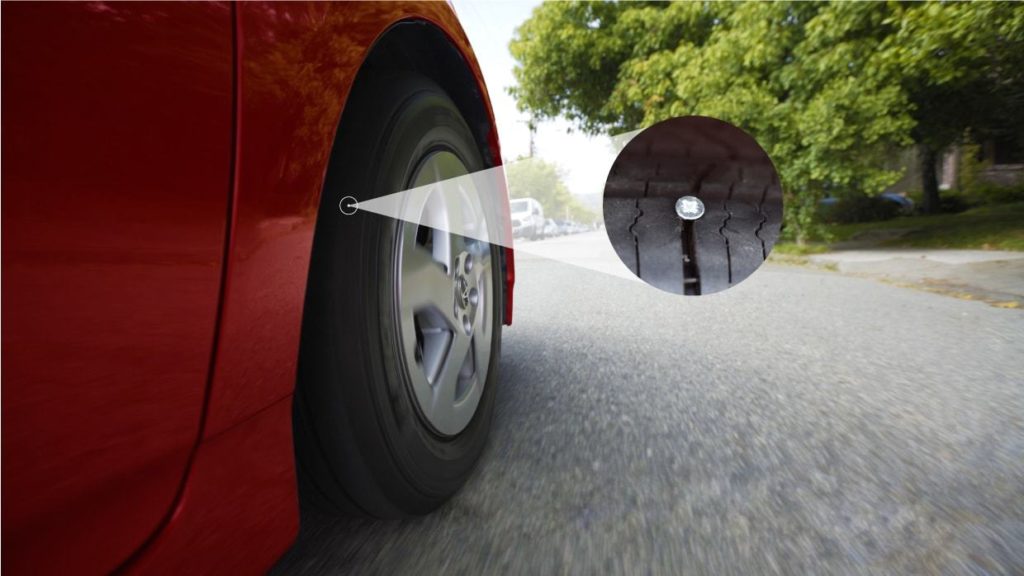 For example, if you are approaching a turn, you should carefully look at the shoulder and the surrounding area to determine what you will do if a vehicle approaching from the other side crosses onto your side of the road. With a little practice it will become instinctive.
For example, if you are approaching a turn, you should carefully look at the shoulder and the surrounding area to determine what you will do if a vehicle approaching from the other side crosses onto your side of the road. With a little practice it will become instinctive.
In Georgia, vehicle use has a significant impact on air quality. Emissions from cars and light trucks contribute to the formation of ground-level ozone, constituting urban smog. These emissions can react with sunlight at high temperatures, causing unhealthy levels of this form of air pollution. This is especially true in warm weather. Vehicle emissions and ground-level ozone can be reduced through proper vehicle maintenance according to the manufacturer's instructions, as well as fewer trips and miles driven.
In the thirteen-county Atlanta area, gasoline-powered cars and light trucks under the age of 25 must undergo an emissions test annually before registration with the District of Columbia (the last three model years are exempt from this requirement). ). The thirteen metro counties covered by the state inspection and maintenance program are: Cherokee, Clayton, Cobb, Coweta, DeKalb, Douglas, Fayette, Forsythe, Fulton, Gwinnet, Henry, Paulding, and Rockdale. For more information about the emissions verification program, call the Georgia Clear Sky Division at 1-800-449-2471.
). The thirteen metro counties covered by the state inspection and maintenance program are: Cherokee, Clayton, Cobb, Coweta, DeKalb, Douglas, Fayette, Forsythe, Fulton, Gwinnet, Henry, Paulding, and Rockdale. For more information about the emissions verification program, call the Georgia Clear Sky Division at 1-800-449-2471.
Be aware that removing or disabling vehicle emission control components is a violation of federal and state law.
In addition to proper vehicle maintenance, you can help reduce air pollution and traffic congestion by limiting driving to essential trips, planning ahead and combining multiple trips, and using fleets, transit, and vehicle sharing.
All drivers should do their part to reduce the impact of cars and trucks on air quality and the environment.
Minimize engine idling time. Avoid idling as this will reduce fuel consumption, engine wear and air pollution. When warming up the engine, follow the manufacturer's recommendations to ensure that the engine has sufficient performance for safe driving. Remember that stopping the vehicle at idle for 10 seconds will use more fuel than restarting the engine.
Remember that stopping the vehicle at idle for 10 seconds will use more fuel than restarting the engine.
Fire: Use mud, turf, dirt or snow to extinguish. Check ditches nearby for water. Wet your clothes. Loosen the dirt with the tire tool to pelt the fire.
Pedal Stuck: Hit the pedal hard with your foot. Change to neutral clutch. Focus on management. Use the handbrake. Switch off the ignition (but do not block).
Brake failure: Shift to a lower gear. Use the handbrake. Brake the tire on the curb. Find a place to stop safely.
Wet brakes: Carefully check brake function after driving through water. The brake may stick, or vice versa, begin to slip. Dry the brakes by moving slowly and applying them a little at a time.
The main constituents of air are nitrogen 78% and oxygen 21%. Nitrogen molecules N 2 - are larger than oxygen molecules O 2 . In general, the air inside a tire is made up of oxygen, nitrogen, and steam, but oxygen and steam create pressure leaks because these molecules pass through the tire walls much faster. The influence of the oxidizing properties of oxygen and water vapor should also be taken into account. Passing through the tire material, oxygen oxidizes the rubber, cord, bead ring, disc. This affects the strength of the tire, and therefore the safety of driving.
Nitrogen molecules N 2 - are larger than oxygen molecules O 2 . In general, the air inside a tire is made up of oxygen, nitrogen, and steam, but oxygen and steam create pressure leaks because these molecules pass through the tire walls much faster. The influence of the oxidizing properties of oxygen and water vapor should also be taken into account. Passing through the tire material, oxygen oxidizes the rubber, cord, bead ring, disc. This affects the strength of the tire, and therefore the safety of driving.
A tire filled with compressed air will leak 0.08 bar/month. Oxygen passes through the tire walls 30-40% faster than nitrogen and leakage will continue until the partial pressure of the gases is equalized. Through experiments, it was found that if the oxygen in the tire does not exceed 5% for passenger tires and 2.5% for trucks, then the ratio of the partial pressure of gases inside and outside the tire will be balanced, and there will be no leakage.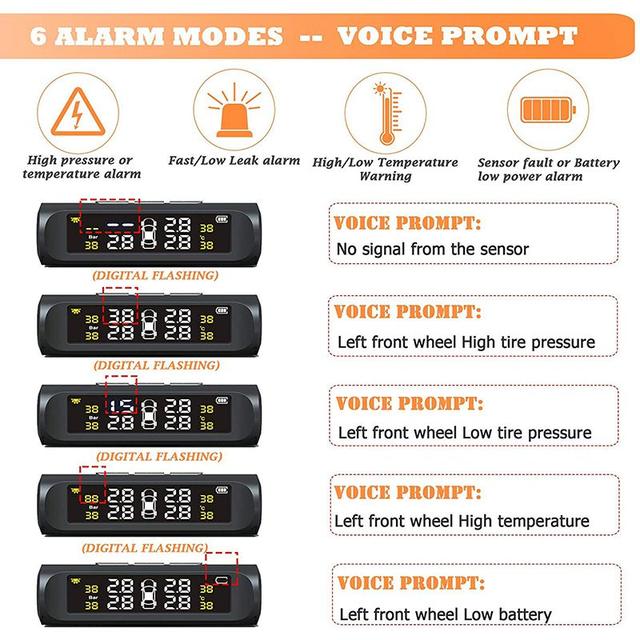 This effect is achieved by pumping nitrogen into the tire.
This effect is achieved by pumping nitrogen into the tire.
The whole process is carried out after the complete pumping of air from the tire, using a special device - a nitrogen generator. The rotary nitrogen generator is a stationary device that is used to convert the air mixture. The air goes through several stages of processing. First, multilevel filtering is performed. Then the air is degreased, cleaned of moisture, impurities of oils, aromatic hydrocarbons. After a full cycle of processing, the output is nitrogen with a purity of more than 99%. As we already know, such gas is the most optimal for inflating car tires.
Exclusion of oxidation processes of tire steel cord and disk material;
Reduced leakage through minor tire damage and rim looseness;
Reducing tire wear and ensuring their uniformity;
Improving the performance of wheels under increased loads and temperatures;
Increasing the smoothness and softness of the passage of road surface irregularities, and as a result - improving vehicle handling;
Improving wheel damping and reducing the load on the vehicle suspension;
Increasing grip with the road surface and reducing the braking distance;
Improving stability when cornering, changing lanes and exits to the side of the road;
Reduction of noise and vibration from tire contact with the road surface.